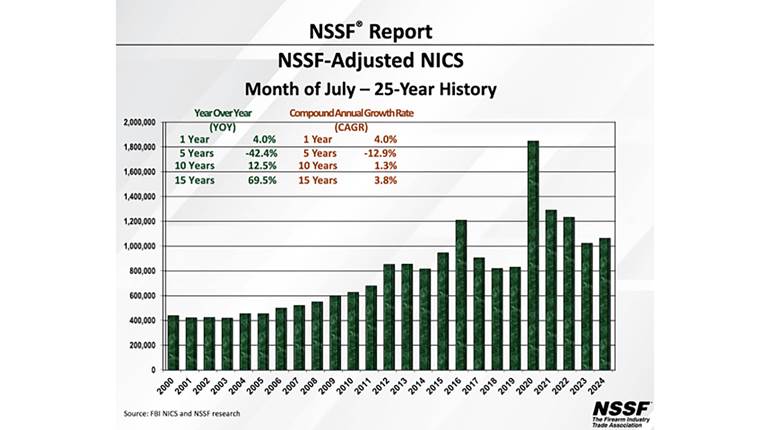
August firearm sales, estimated by volume of NICS checks conducted by the FBI, came in at 1.4 million units according to Small Arms Analytics & Forecasting (SAAF). The figure represents a drop of 16.8 percent compared to last year, but in a press release last week SAAF Chief Economist put things in perspective by explaining, “…the current year-to-date total of nearly 13.4 million firearms sold is by far the highest level for the first two-thirds of any year except for 2020.”
Since May gun purchases have fallen short of setting any new all-time monthly records. Those numbers have, however, routinely claimed second-place honors, only eclipsed by last year’s scalding pace.
Forecasters predicted a decline in sales after law-abiding citizens bolstered their personal protection preparedness during the onset of a global pandemic and widespread urban unrest. Continuing demand at a rate that greatly overshadows the previous “new norm,” however, was not uniformly anticipated.
This year held the lead in total annual sales through May. When that reporting period ended, Brauer noted, “[T]he overall firearms sales pace thus far this year clocks in at nearly 9.2 million units as compared to 8.7 million units for January to May 2020.”
That lead was surrendered in June. Sales for 2021 after the month totaled roughly 10.6 million, about 500,000 behind the previous year. Brauer again put the figures into perspective. He reported that at the same point in 2019 the total was only 6.6 million—4 million behind this year.
The latest quarterly report from Smith & Wesson, covering May, June and July, reflects an industry that remains healthy, even during the months with a purchasing decline. Company sales set an all-time quarterly record during the period at $274.6 million. The figure represents an increase of $44.7 million, or 19.5 percent, better than the same time in 2020—despite the slight drop in overall demand nationwide.






































